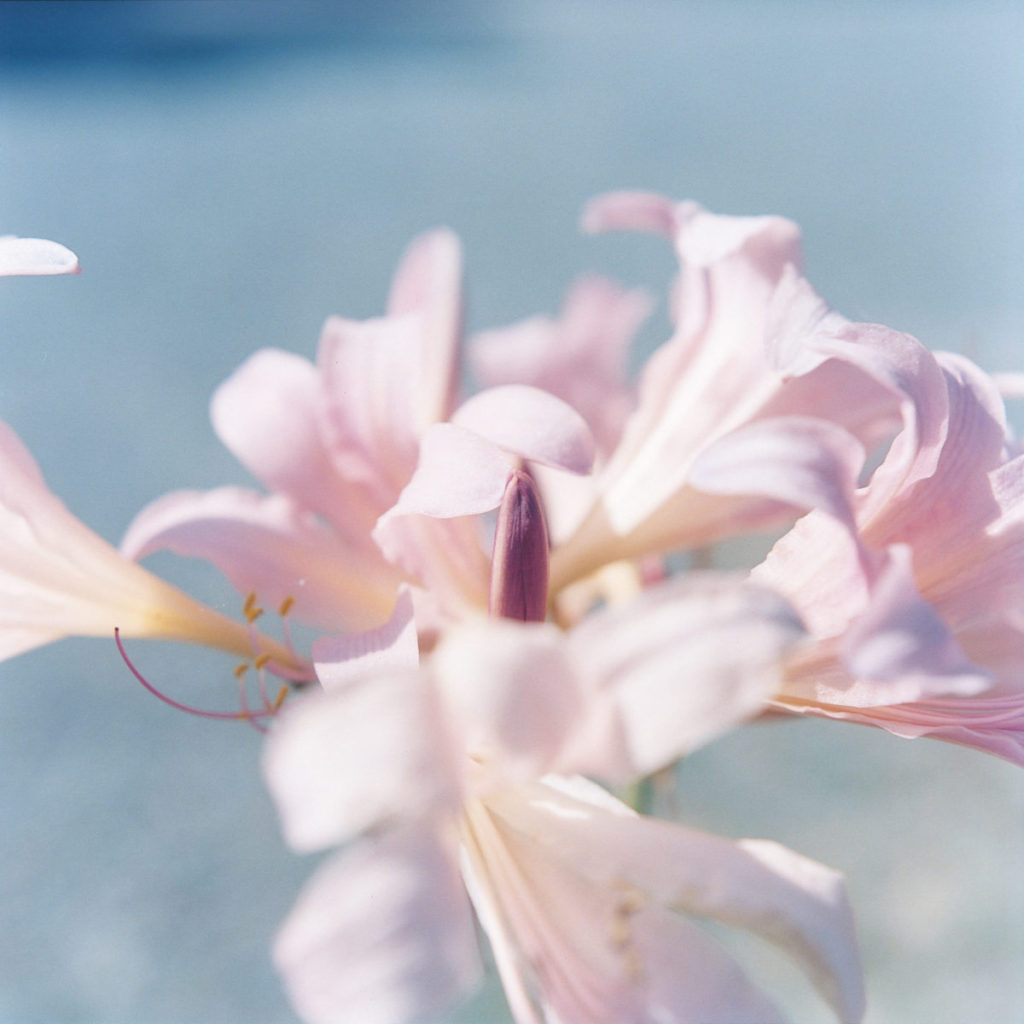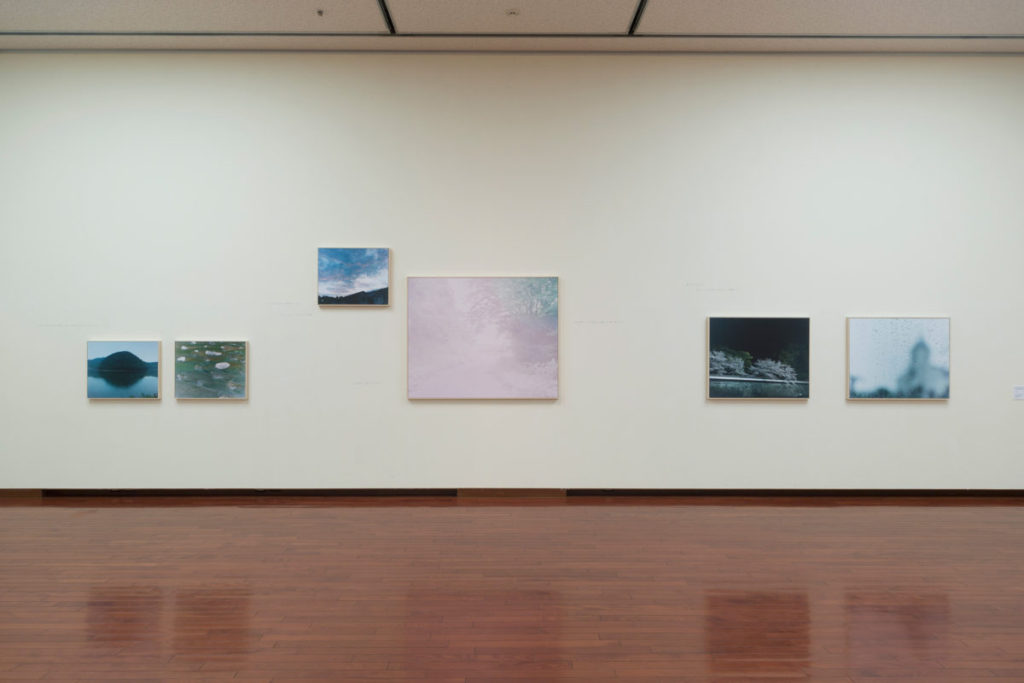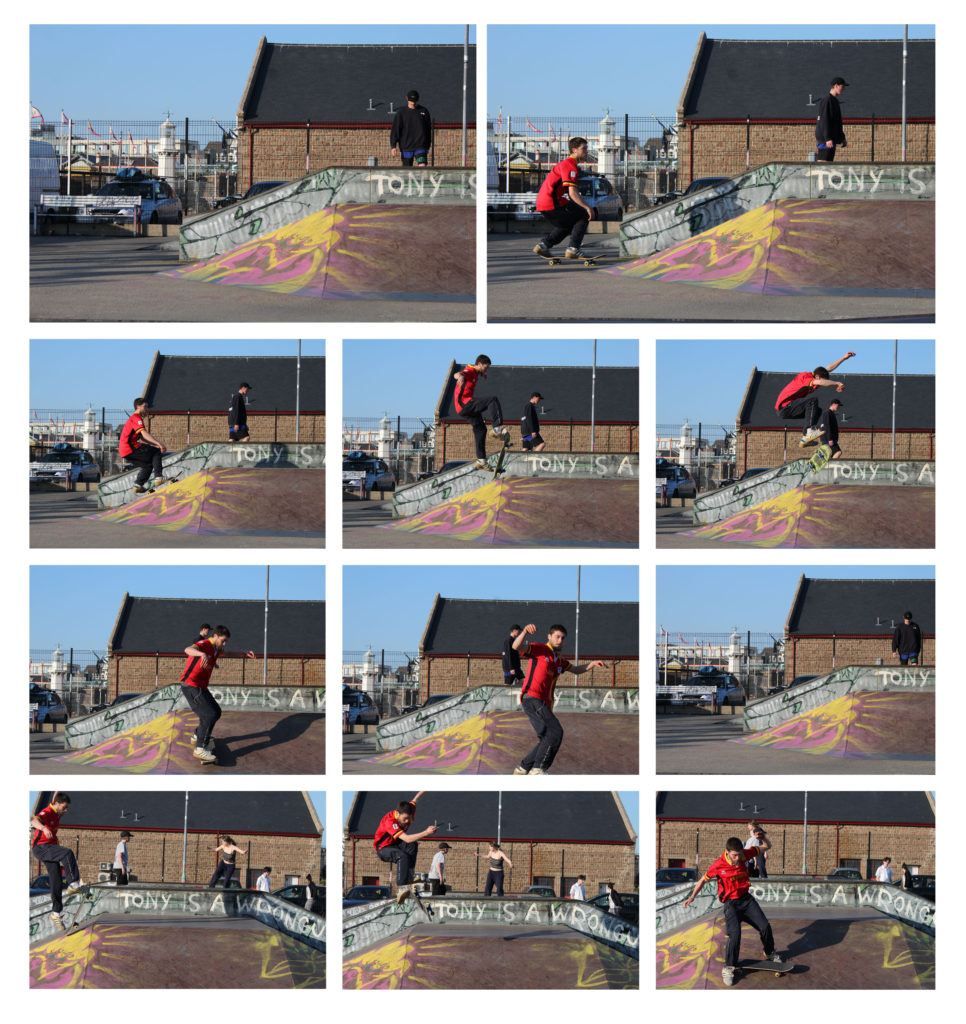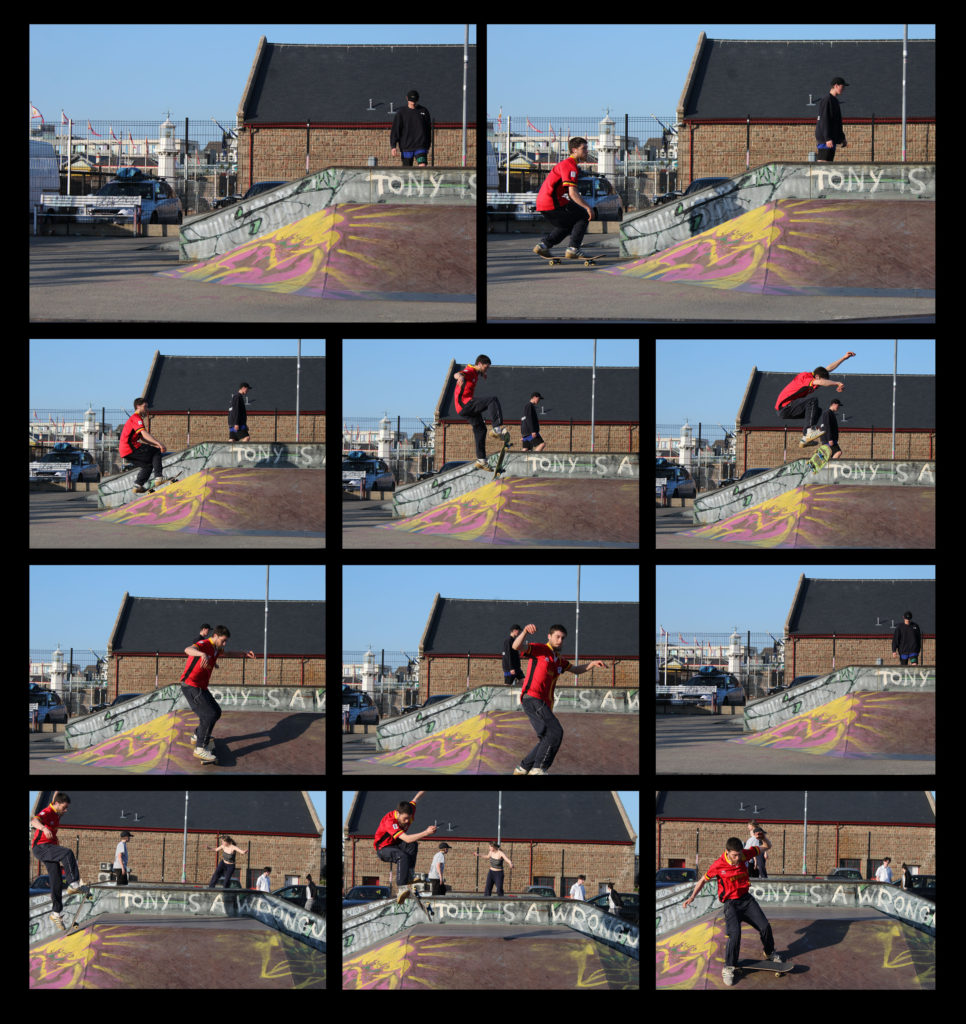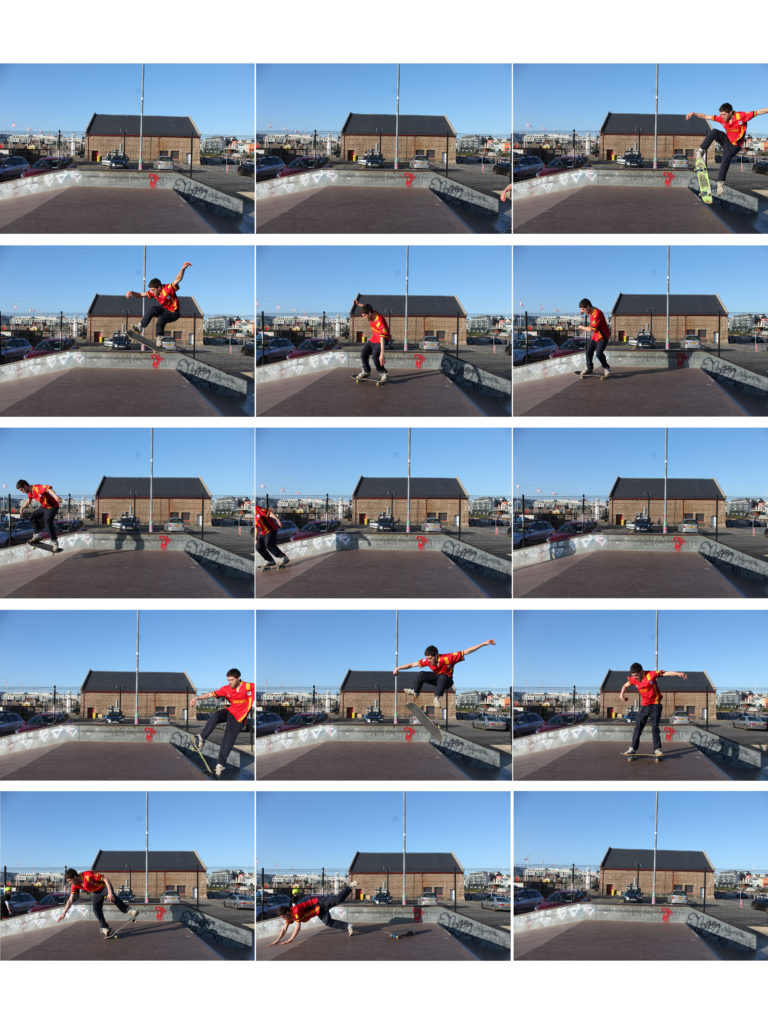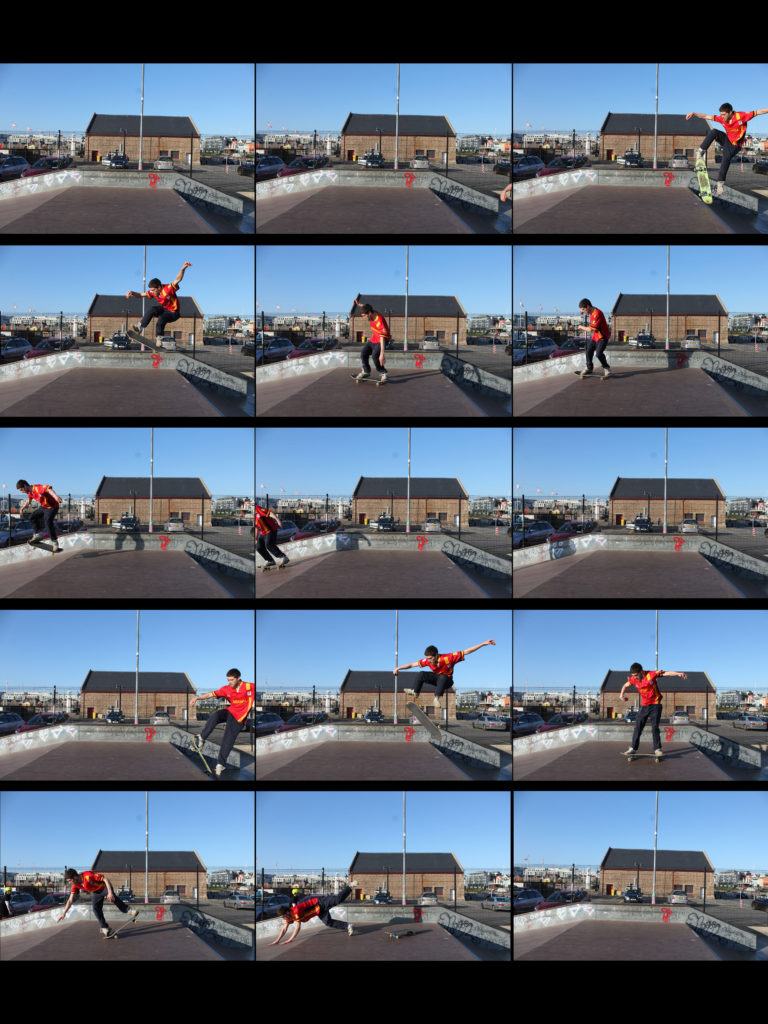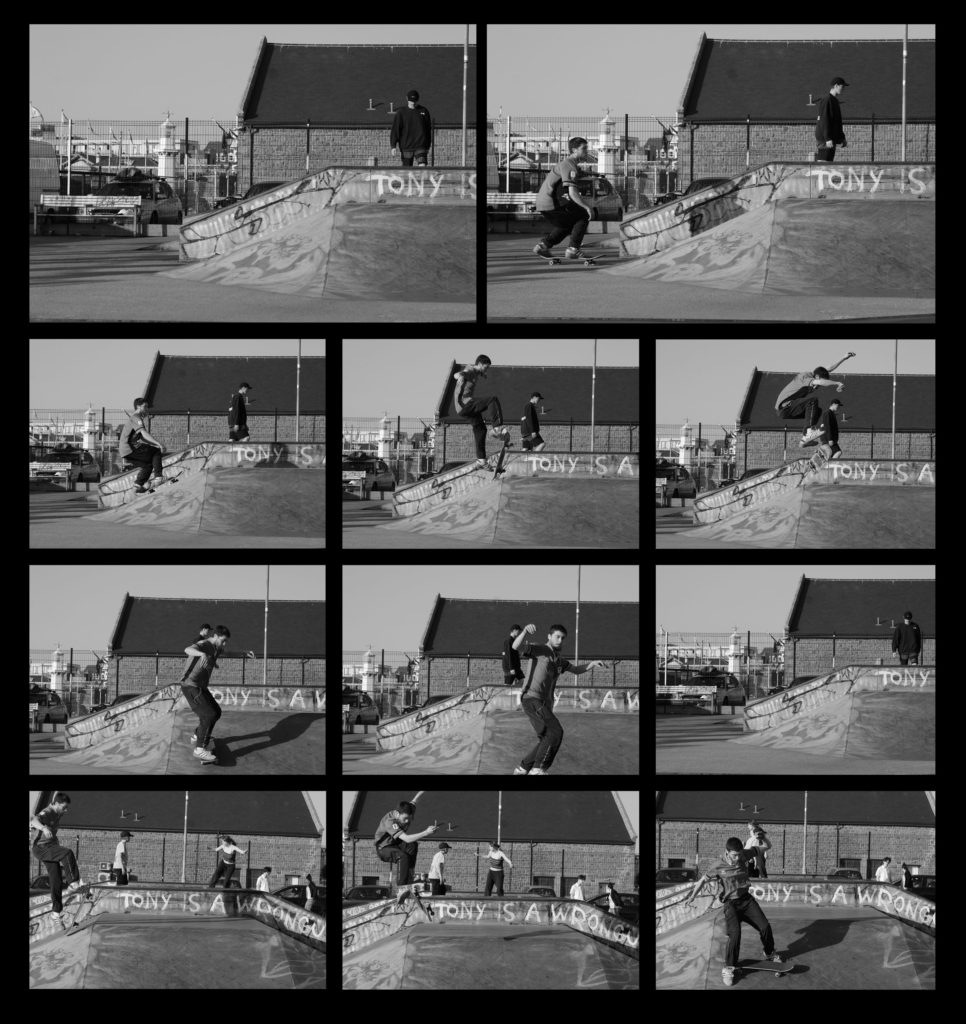Daily Archives: April 3, 2019
Filters
EADWEARD MUYBRIDGE TYPOLOGIES – EXPERIMENTING (SHOOT 1)
I experimented using different layouts, boarders and colours throughout this process of creating a set of images and displaying them in the style of Eadweard Muybridge however, I found they didn’t really represent his work clear enough. I changed the background colour from white to black which I found allowed for the images to stand out a lot more than they did on the white background. I looked further into his work and realised that all of his images where in black and white and mine where in colour and clearly didn’t have the same effect. I changed my images into black and white and found they looked significantly better especially on the black background. Having them in black and white I found created a more vintage feel to them, which I thought Eadweard’s work did also have aspects of that integrated within his work.
Easter Photo shoot Plan
Produce a detailed plan of 3 shoots for each idea in your specification that you are intending to do; how, who, when, where and why in the next 3 weeks?
Photo shoot one – For my first photo shoot I am planning to further develop my previous mirror shoot by doing a similar photo shoot be in a different location to add to this idea. For the location, I am planning to go to a beach/ rocky beach location. I am also going to try to use different size and shaped mirrors also using a model to hold the mirror. To complete the shoot I will use a tripod to make sure the photos are taken from exactly the same place each time.
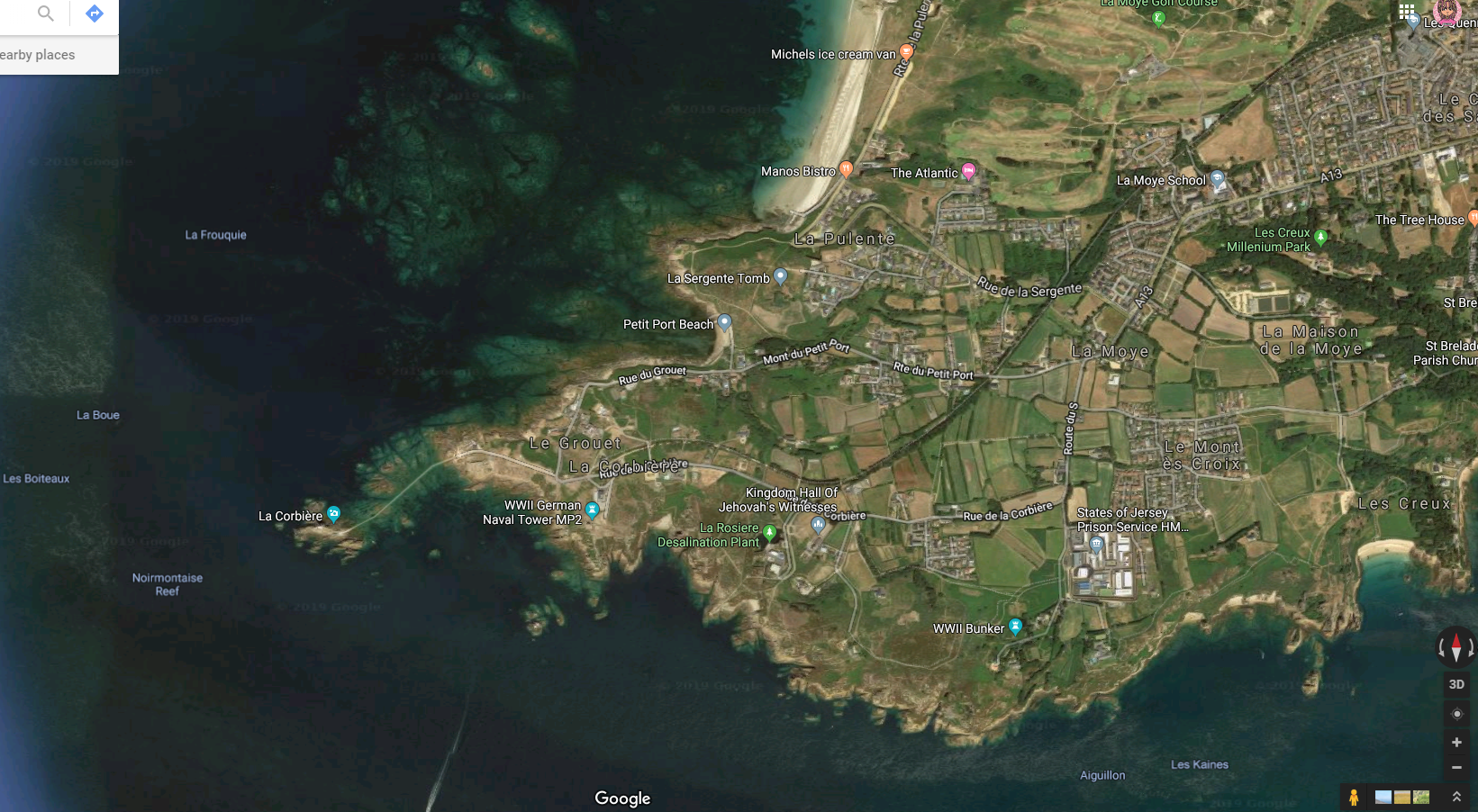
Photo shoot two – The next photo shoot will consist of taking a photo of the landscape, digitally manipulating it in some way, printing it out and then somehow rephotograph it in the landscape. This could be achieved by either going a model to hold the image in their hands or holding up the image myself behind the camera. The show differentiation in the images which will be printed out I plan to take them at a different weather condition or a different time of day which will change the lighting and shadows.

William Notman, rephotographed by Andrzej Maciejewski in 2002
Photo shoot Three – My third photo shoot will be similar to my second but instead of using images I have taken and rephotographing them back into the landscape, I will used archival images from public archive and rephotographing them back into the landscape. I could incorporate these images back into the landscape as previously stated in my second shoot. The idea behind these images is to show what changes have occurred in between the time when the two images have been taken.

Fady al-Sadik in Alleruzzo’s 2003 photo — orphaned by the war and was rife with crime.
Possible Photo Shoot Four – Another photo shoot I could conduct is taking paintings in frames and rephotographing them back into the landscape. The paintings could be cheaply purchased from a second shop. The idea of this shoot is too show the contrast between the painting and the surrounding landscape. The artworks would juxtapose the landscape (e.g. An smokey industrial painting in an idyllic country-side background)

Oil Painting – Industrial Landscape, Helene Ilich
FIRST SHOOT
For my first shoot I wanted to experiment with movement and performance by taking a series of photos of a movement. I did my first shoot in the studio so I could have access to a neutral background so my subjects became the only focus in each photograph. This photo shoot was for the purpose of experimenting and practicing the creation process of moving imagery. I asked my friends to perform simple movements while I put my camera into the burst setting so I could take pictures quickly and gain a number of photos for each movement they performed. I then divided each group of photos for different movements into different folders in Lightroom so I could easily find each set of images. When editing a set of images I used the sync setting so each of the photos were edited identically the same, in terms of cropping and adjusting colour and shade corrections. I then exported each set of photos in separate folders and then uploaded every photo for each set into photoshop by loading the files into stacks. This meant that each photo was uploaded into one document but into individual layers for each set. I then made frames from each layer to create a frame animation. This means that each photo for a set is displayed in one file as a gif which demonstrates each movement in each photo and set.
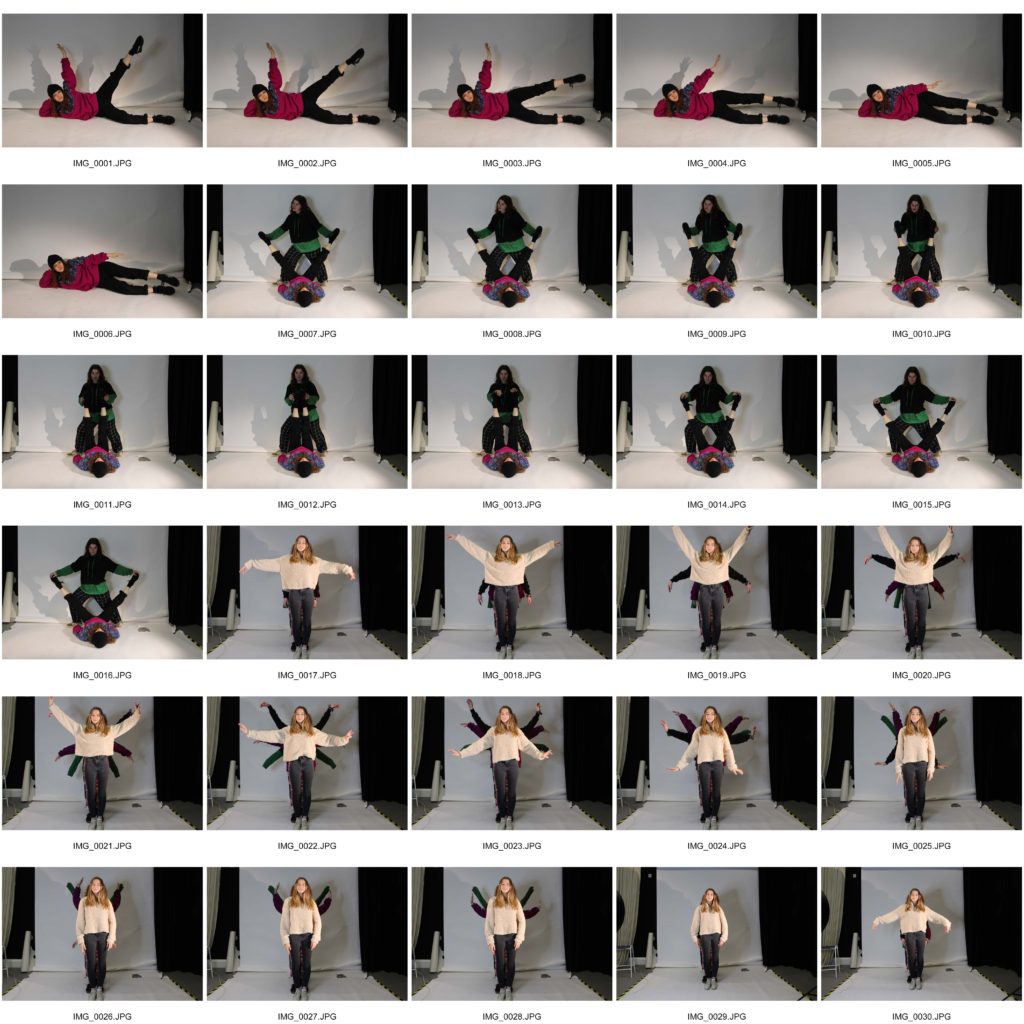
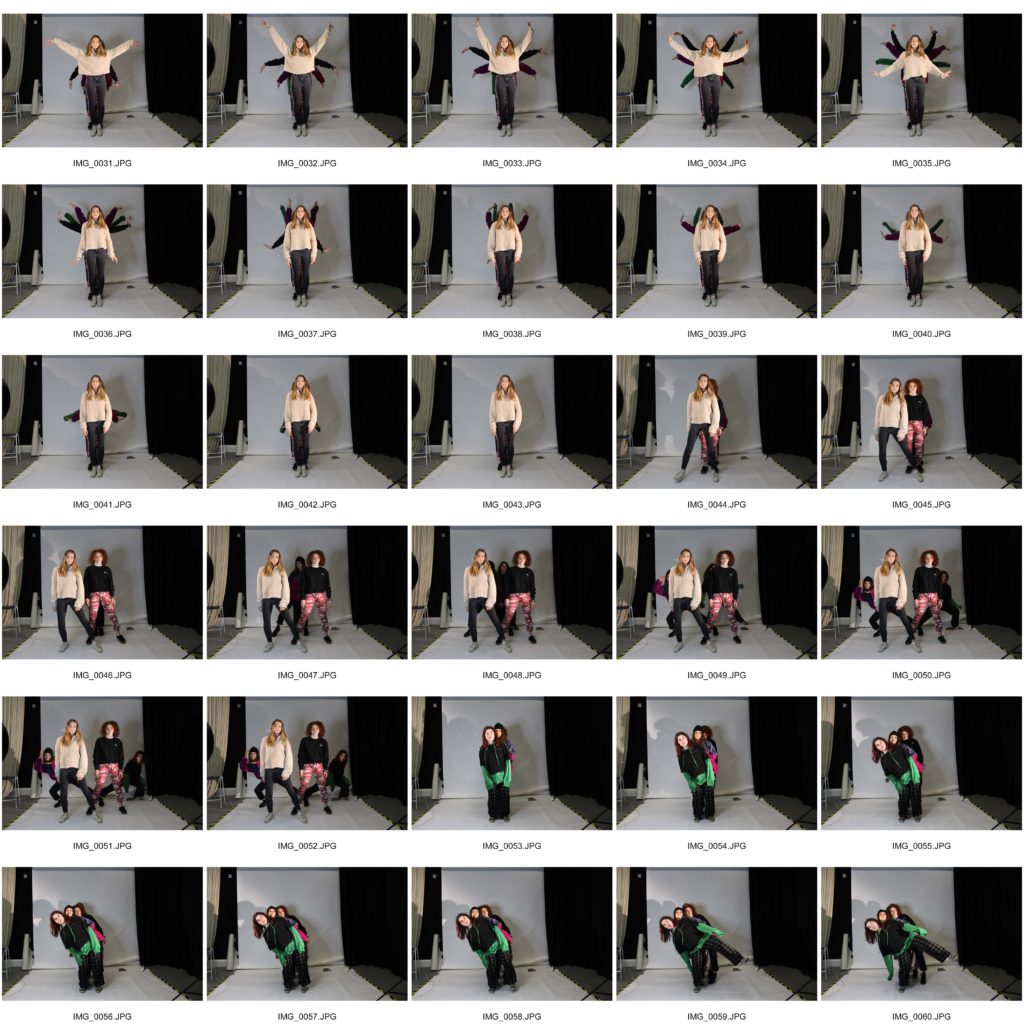
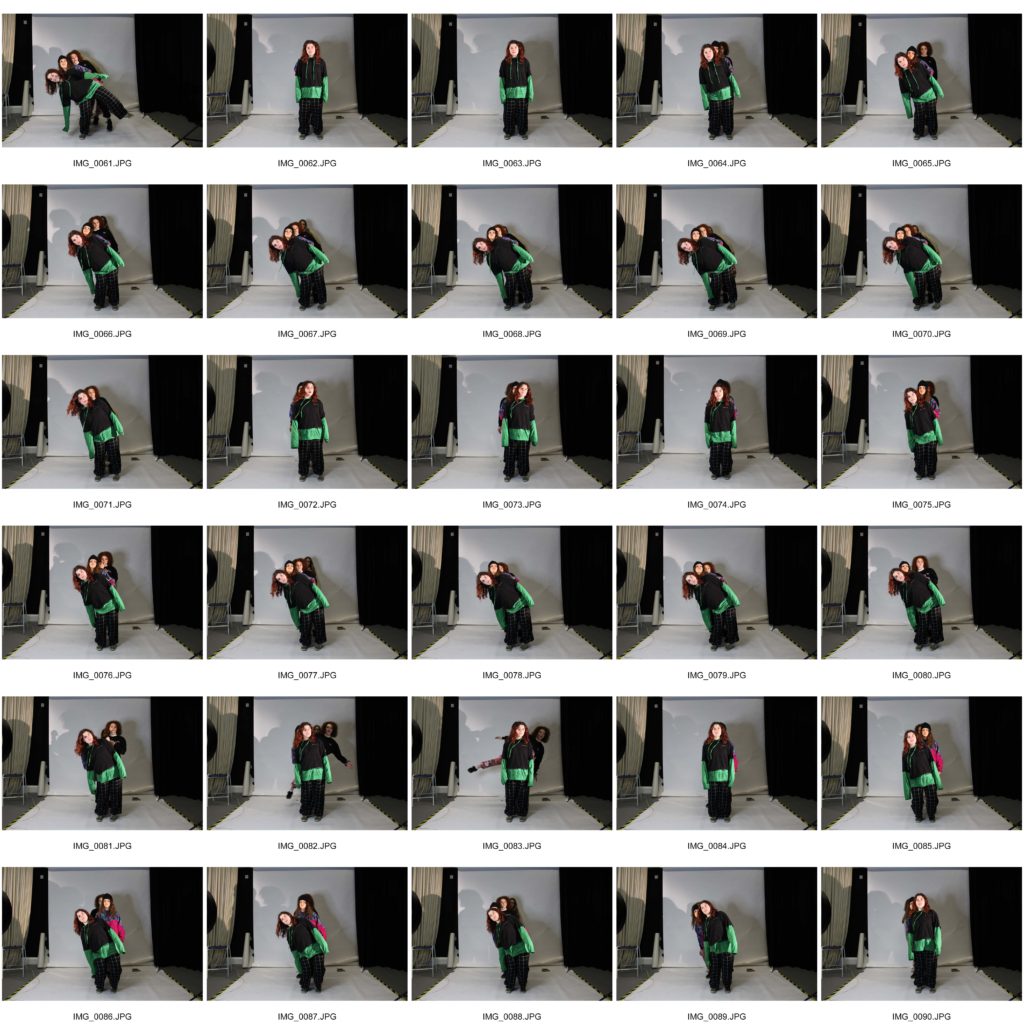



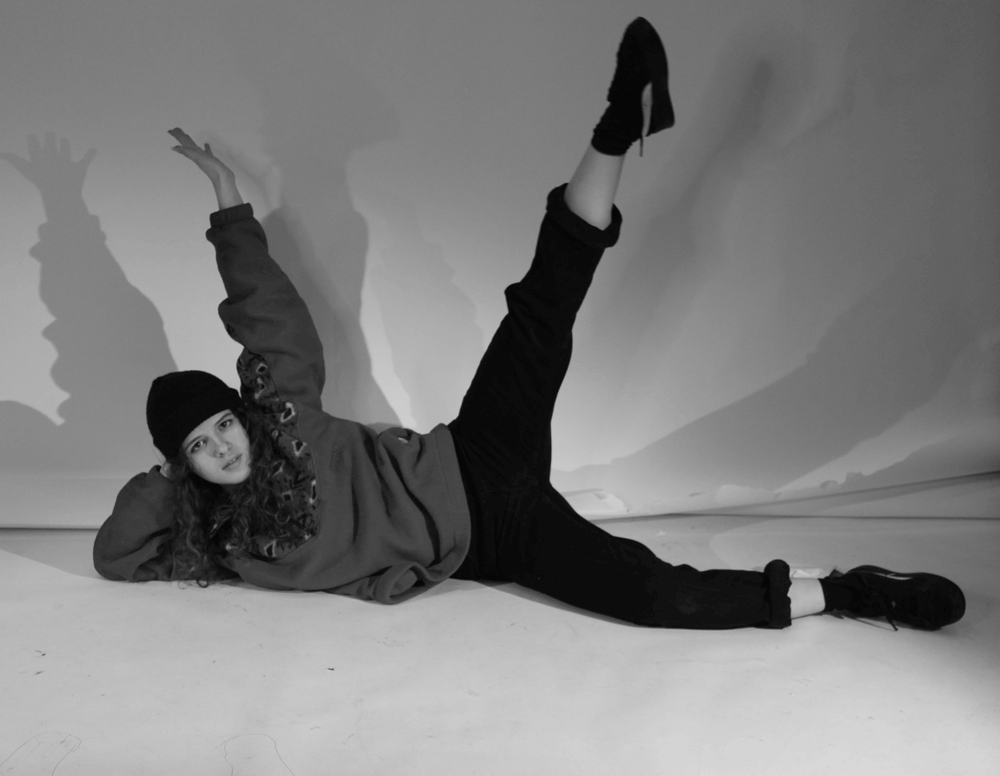

Wassily Kandinsky
Spirituality
Russian-born artist, one of the first creators of pure abstraction in modern painting. After successful avant-garde exhibitions, he founded the influential Munich group Der Blaue Reiter (“The Blue Rider”; 1911–14) and began completely abstract painting. His forms evolved from fluid and organic to geometric and, finally, to pictographic. A sensitive and reflective child, Kandinsky was fascinated by the fanfare of sensory experience that childhood affords, through colour and sound and music


An event that effected his abrupt change of career in 1896: seeing an exhibition of French Impressionists in Moscow the previous year, especially Claude Monet’s Haystacks at Giverny, which was his first experience of nonrepresentational art. The impressionists used values of color and light to show their subjects rather than painting in fine detail. and then hearing Wagner’s Lohengrin at the Bolshoi Theatre. Kandinsky chose to abandon his law career and move to Munich to devote himself full-time to the study of art.
He began with conventional themes and art forms, but all the while he was forming theories derived from devoted spiritual study and informed by an intense relationship between music and color. These theories coalesced through the first decade of the 20th century, leading him toward his ultimate status as the pioneer of abstract art. Color became more an expression of emotion rather than a faithful description of nature or subject matter.
Concerning the Spiritual in Art Book
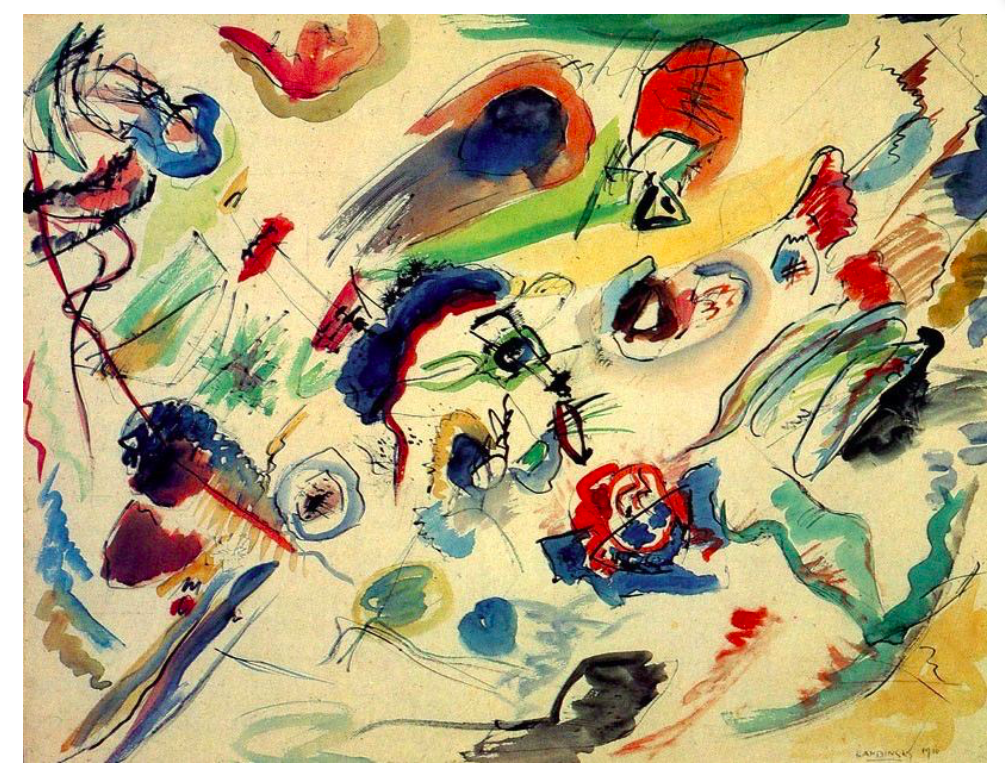

Kandinsky’s book ‘Concerning the spiritual in art’ explains Kandinsky’s own theory of painting and crystallizes the ideas that were influencing many other modern artists of the period. Along with his own groundbreaking paintings, this book had a tremendous impact on the development of modern art.
Kandinsky’s ideas are presented in two parts. The first part, called “About General Aesthetic,” issues a call for a spiritual revolution in painting that will let artists express their own inner lives in abstract, non-material terms. Just as musicians do not depend upon the material world for their music, so artists should not have to depend upon the material world for their art. In the second part, “About Painting,” Kandinsky discusses the psychology of colors, the language of form and color, and the responsibilities of the artist.
“The spiritual life, to which art belongs and of which she is one of the mightiest elements, is a complicated but definite and easily definable movement forwards and upwards. This movement is the movement of experience. It may take different forms, but it holds at bottom to the same inner thought and purpose.”
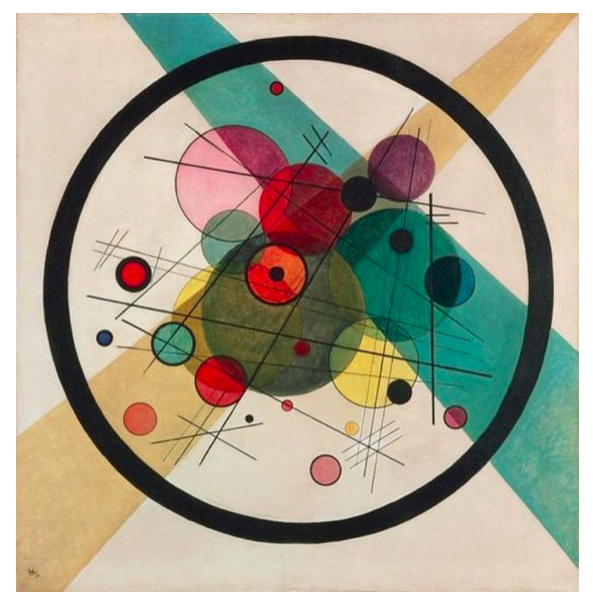
He goes on to offer a visual metaphor for our spiritual experience and how it relates to the notion of genius:
The life of the spirit may be fairly represented in diagram as a large acute-angled triangle divided horizontally into unequal parts with the narrowest segment uppermost. The lower the segment the greater it is in breadth, depth, and area.
“When religion, science and morality are shaken … and when the outer supports threaten to fall, man turns his gaze from externals in on to himself. Literature, music and art are the first and most sensitive spheres in which this spiritual revolution makes itself felt. They reflect the dark picture of the present time and show the importance of what at first was only a little point of light noticed by few and for the great majority non-existent. “

Wassily Kandinsky, ‘Several Circles’ (1926)
“This essential connection between color and form brings us to the question of the influences of form on color. Form alone, even though totally abstract and geometrical, has a power of inner suggestion. A triangle (without the accessory consideration of its being acute — or obtuse — angled or equilateral) has a spiritual value of its own. In connection with other forms, this value may be somewhat modified, but remains in quality the same.
I chose Wassily Kandinsky as a main artist to take inspiration from in my project, especially his theories on spirituality and art, as I think it links to my previous work and is a concept i can build on in my future photo shoots and will develop my work conceptually and contextually. “This essential connection between color and form brings us to the question of the influences of form on color. Form alone, even though totally abstract and geometrical, has a power of inner suggestion.” He states that shapes have spiritual value which is something I want to draw on in my images.
Shape and Colour Theories

Like symphonies, Kandinsky’s great abstract paintings speak directly to our senses and feelings. Their constellations of mysterious marks are like waves of sound that trigger emotions. For him, the world they pointed towards was a spiritual realm, a hidden truth.
‘For Kandinsky, art was a spiritual and emotional experience. He wanted his paintings to transcend recognized forms and express feelings through colors and shapes. Kandinsky argued that artistic experiences were all about feeling, and different colors affected mood. Colour had the ability to put viewers in touch with their spiritual selves. For Kandinsky, yellow could disturb, while blue might make people feel good. Kandinsky’s thoughts on color were similar to Johann Wolfgang von Goethe’s belief that different colors can convey certain emotions. The warm colors – red, yellow, and orange – are usually considered lively colors that can sometimes be harsh. The cool colors – green, blue, and purple – are considered more peaceful and subdued. Kandinsky was especially fond of blue. He also discussed the neutrals, black, gray, and white. White is silence and quiet, and black is completely devoid of possibility. Gray can go either way.’

He formulates two core sensory distinctions between yellow and blue in terms of movement:
- Yellow moves towards the viewer, outward from the picture plane. Blue recedes, that is, moves away from the viewer.
- Yellow moves out of itself, that is, a yellow colour area seems to expand. The blue moves within itself, concentrically.
Kandinsky links yellow with human energy:
“The first movement of yellow, that of approach to the spectator (which can be increased by an intensification of the yellow), and also the second movement, that of over-spreading the boundaries, have a material parallel in the human energy which assails every obstacle blindly, and bursts forth aimlessly in every direction.”
Yellow is an “earthly colour”, which therefore can never have a profound spiritual meaning. This is the prerogative of blue: “The power of profound meaning is found in blue, and first in its physical movements (1) of retreat from the spectator, (2) of turning in upon its own centre. The inclination of blue to depth is so strong that its inner appeal is stronger when its shade is deeper. Blue is the typical heavenly colour.” In other words, his interpretation of this colour contrast is anchored to familiar fundamental dualities: “matter” against “spirit”, “earth” against “heaven”, “man” against “God”, etcetera (admittedly, he doesn’t actually use the word “God”).

The Color theory was published in 1911 and meant to explain the painter’s palette in two ways: the effect on the eye (person’s physical understanding of the color) and “inner resonance”, phycological effect, when it effects your spiritual experience.
The theory describes not only the colors but the geometrical objects and it’s impression on the viewer:
“According to Kandinsky…, a dull shape like a circle deserves a dull color like blue. A shape with intermediate interest like a squaredeserves an intermediate color like red. A dynamic, interesting shape like a triangle deserves an enegetic, luminous, psychotic color like yellow.
Photoshoot Plan | Noirmont
This shoot will be at Noirmont point on Jersey’s south coast. I will fly a drone over a few specific locations on and around that headland. The locations I would like to shoot are Batterie Lothringen including the MP1 which covers the majority of the Noirmont headland, the Noirmont Point lighthouse and Janvrin’s Tomb in Portelet bay.


The satellite image below shows the locations I’d like to shoot, each colour coded by a coloured circle.
Green – Janvrin’s Tomb
Blue – Gun Point 1
Black – Gun Point 2
Orange – MP1 Tower + Range Finder
Yellow – Lighthouse
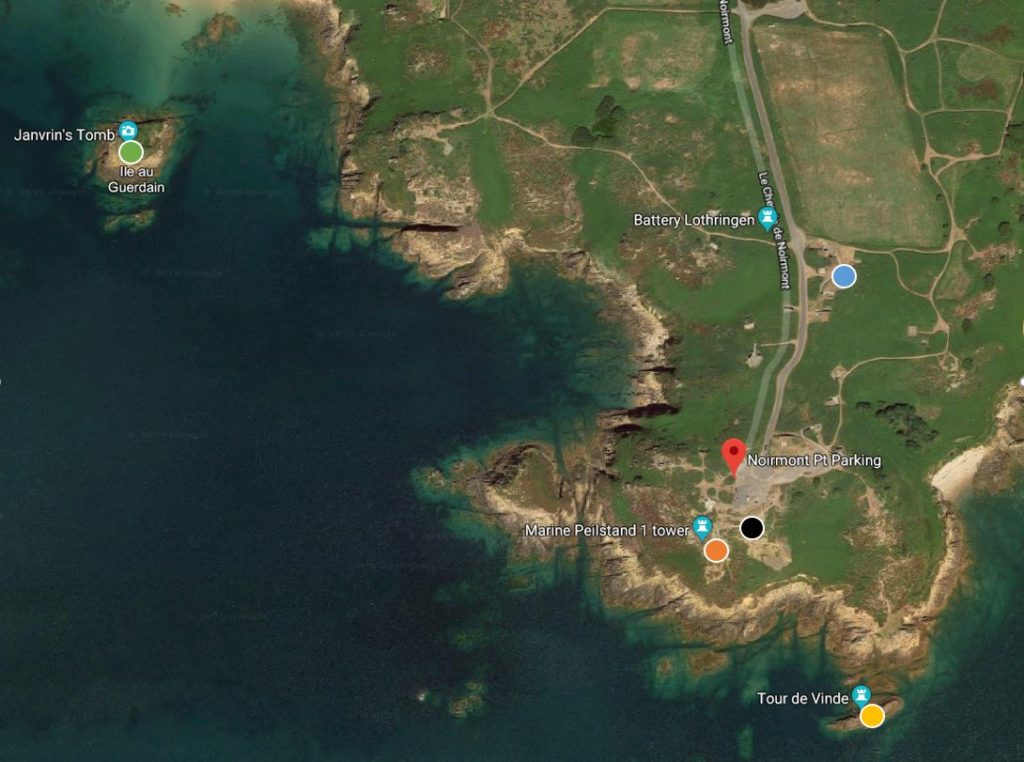
The aim of the shoot is to get top down images of locations that look like circles from above, I used satellite imagery to find the locations and also reviewed air laws and local airspace regulations to develop a plan and ensure the flight is within all regulations. The flight to Janvrin’s tomb takes the drone to it’s maximum legal distance but does not breach it, the location is just outside the Jersey Airport ATZ (Air Traffic Zone) yet we will still file a flightplan to let ATC (Air Traffic Control) know we are flying, giving location, time airborne, height and time down.
Disposable Camera shoot
After doing some research into the the Disposable Camera Project, I decided that I wanted to take on this idea for myself. Because I know when using a film camera the quality and style of image can change dramatically and create variation. What I did like about using the disposable camera was that there is only one setting so I didn’t have to worry about the camera, so I could focus on what I was taking images of. However because you are not able to look back you can end up take photos of the same things twice, which is a problem because you have a limit of 30 shots before the camera runs out.
What I found when I got back the camera was that many of the images that I had taken were out of focus and not any good really, and overall the quality of the images from this shoot are nowhere close to what you would achieve on a regular digital camera. And shooting on film camera is very expensive the camera cost me about six pounds and then to get the images developed cost my about seven pounds so for how much the process cost I don’t think that it is worth it.
Below are the 14 images that I got back from the camera that could be useful for the project, the rest of the images in the project where to out of focus and not up to the standard of anything that I would want to use. I wanted to do this project to see the variation and difference that using a a film camera would crete over a regular camera. But looking back at these images now due to the quality and the lack of control there is when taking the images I not think that I will use any type of film camera in this project.

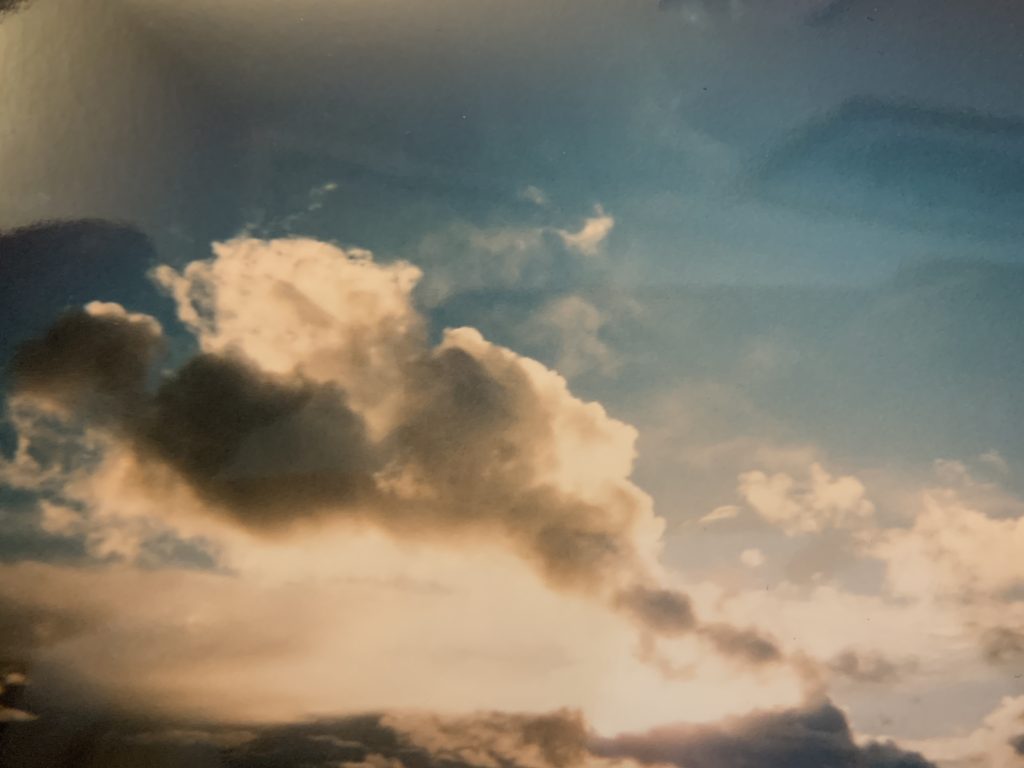
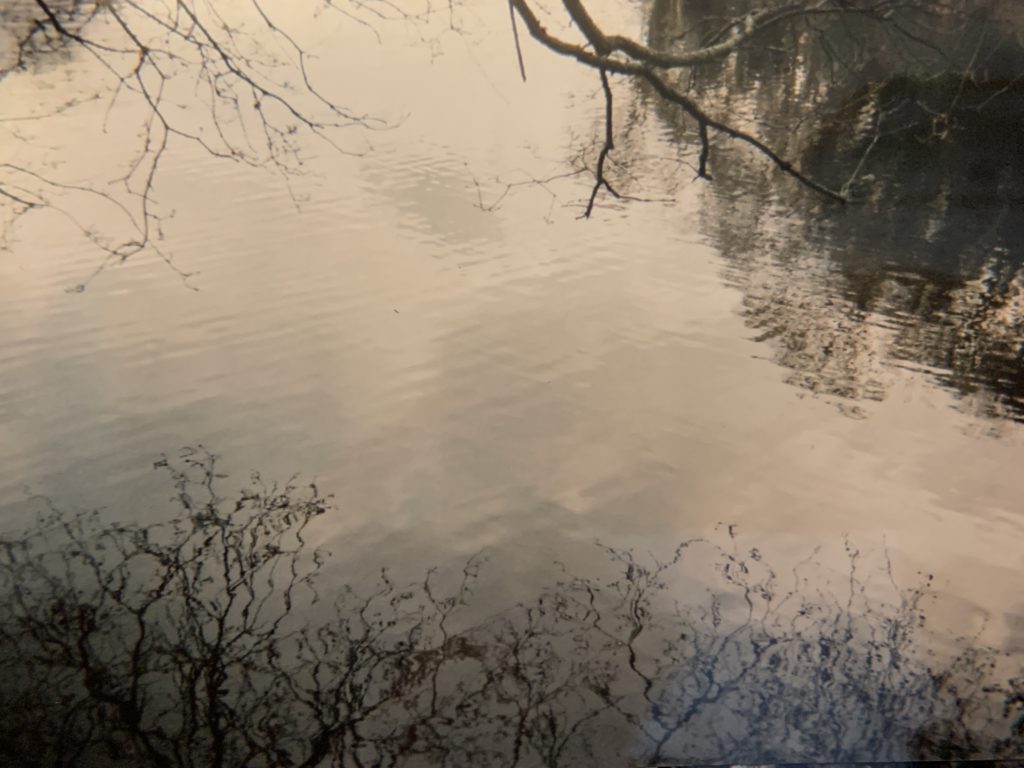
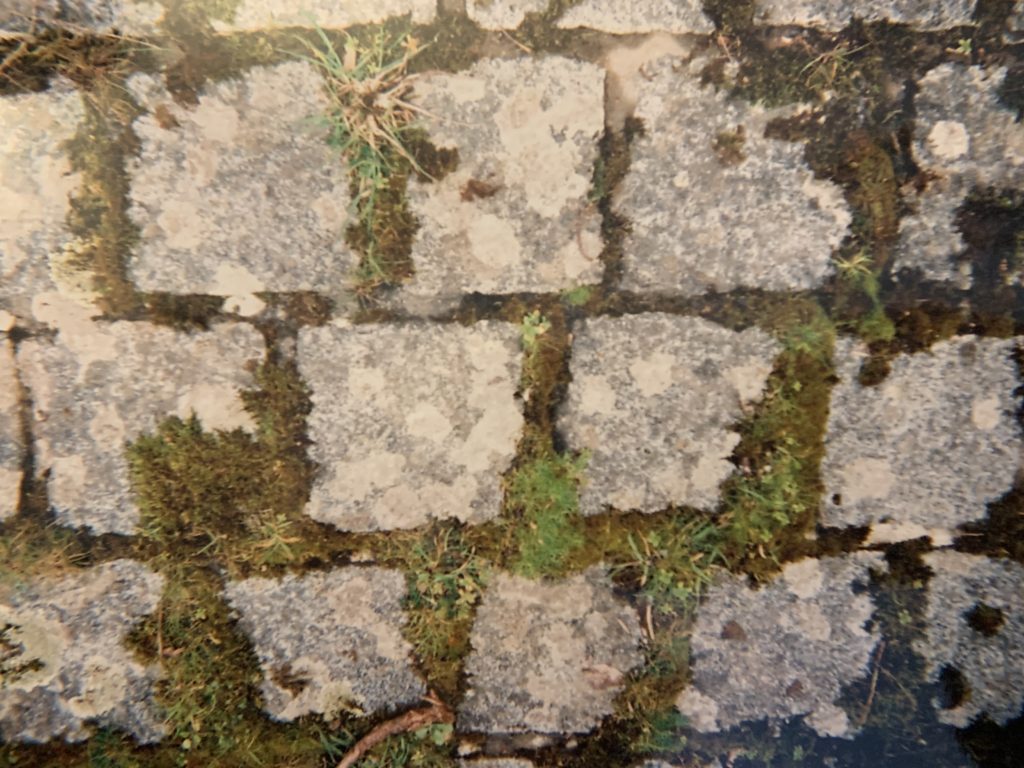
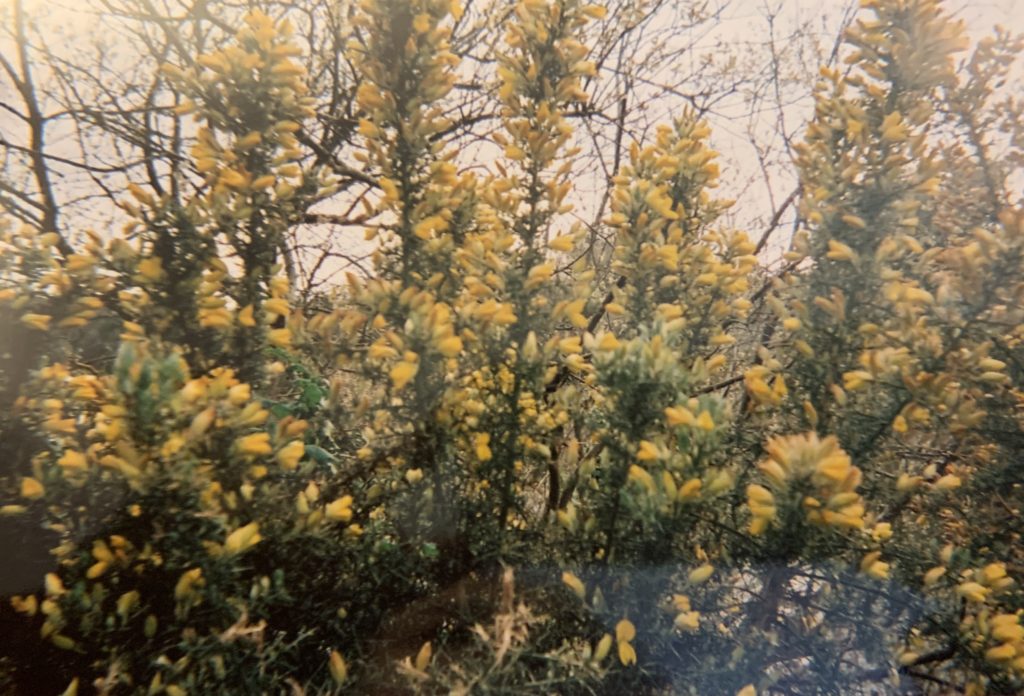
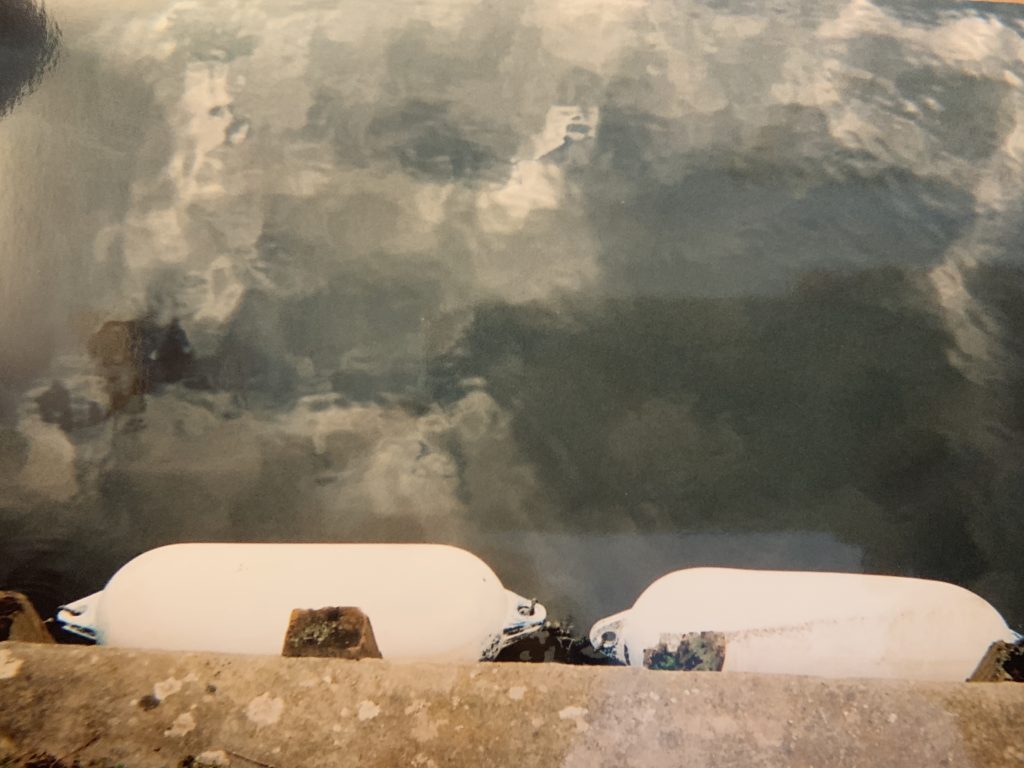
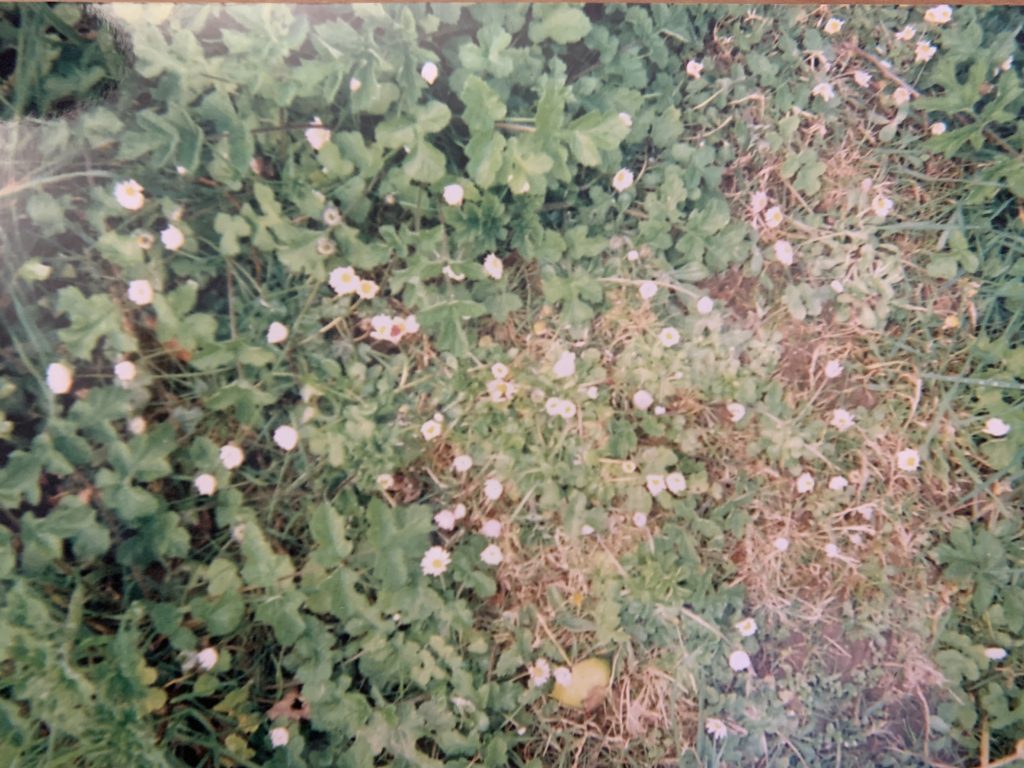

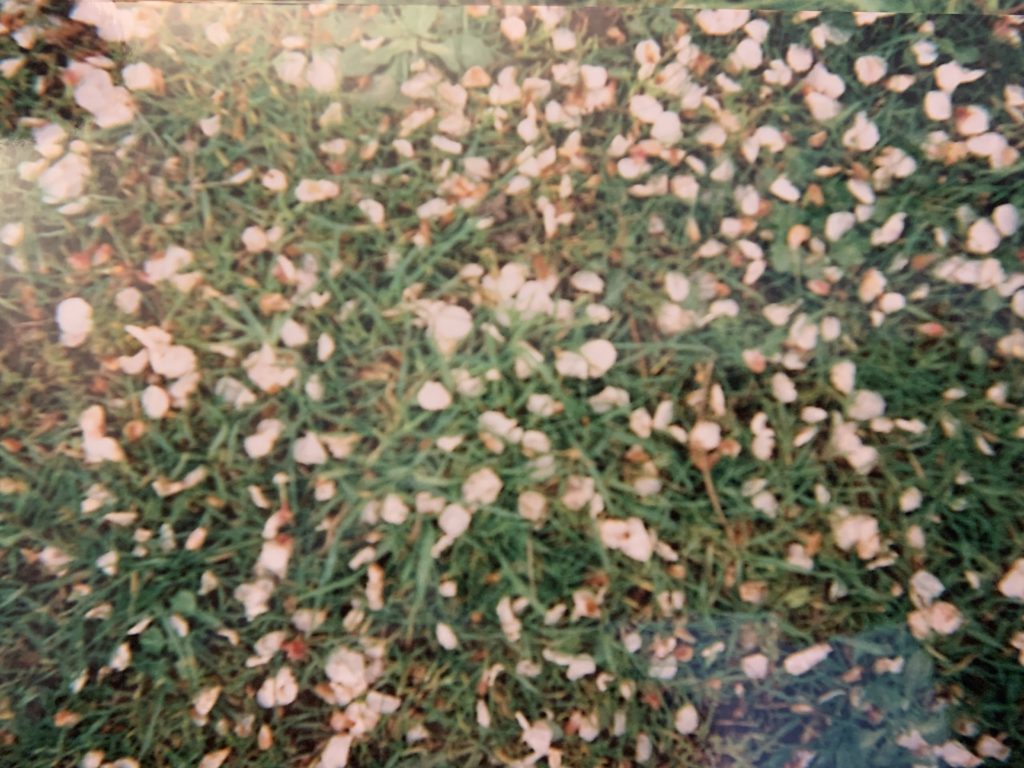
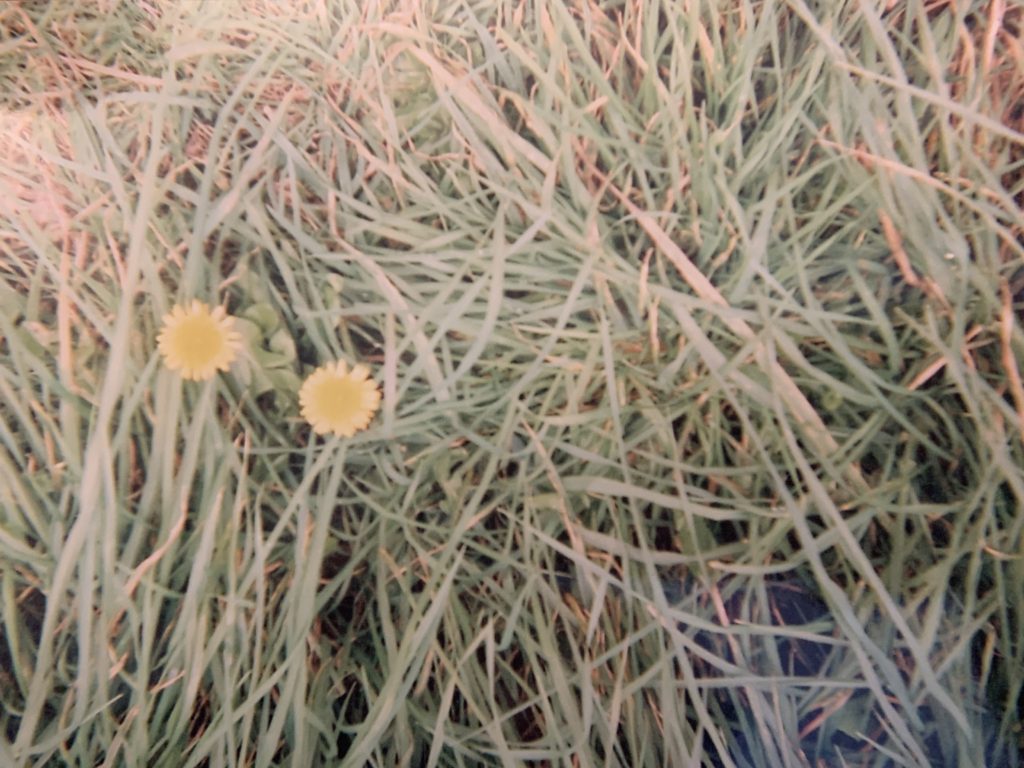
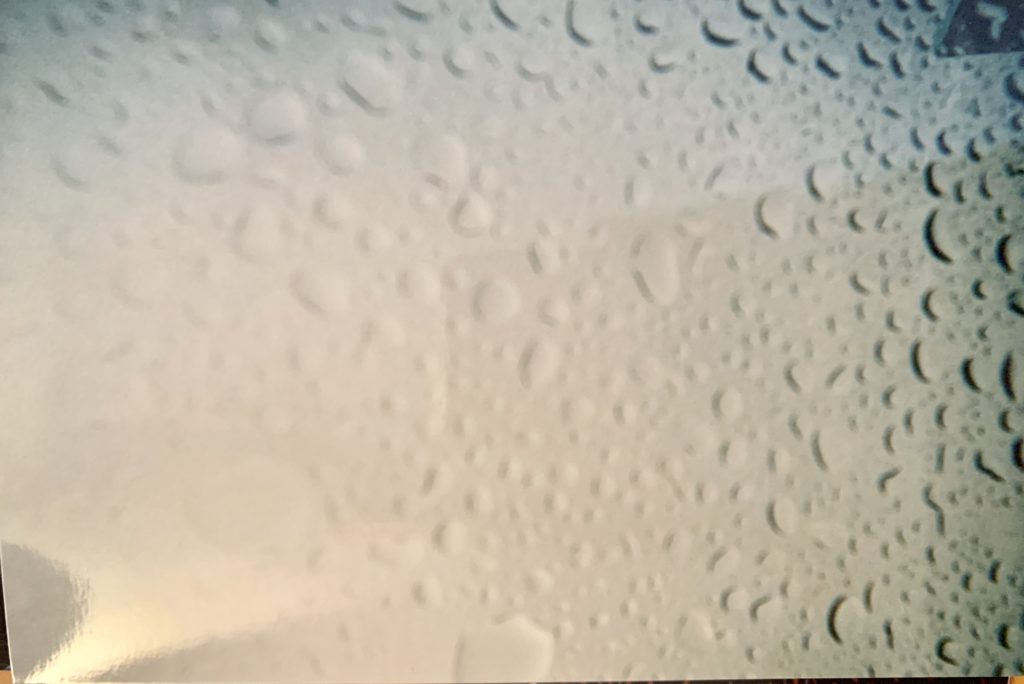

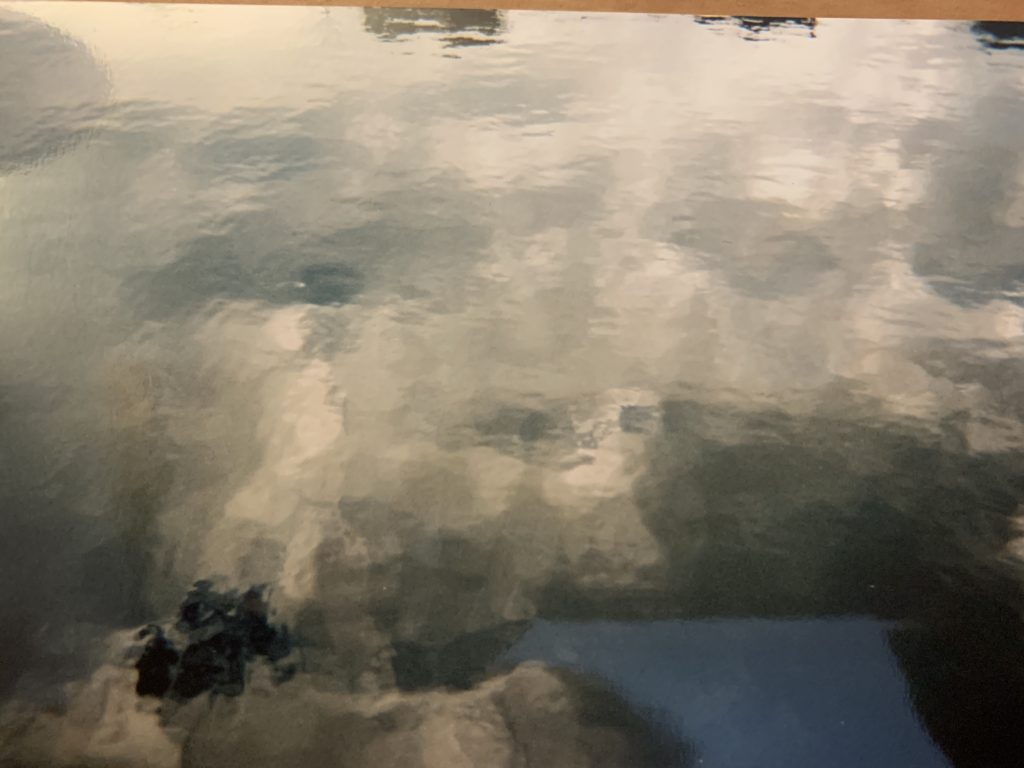
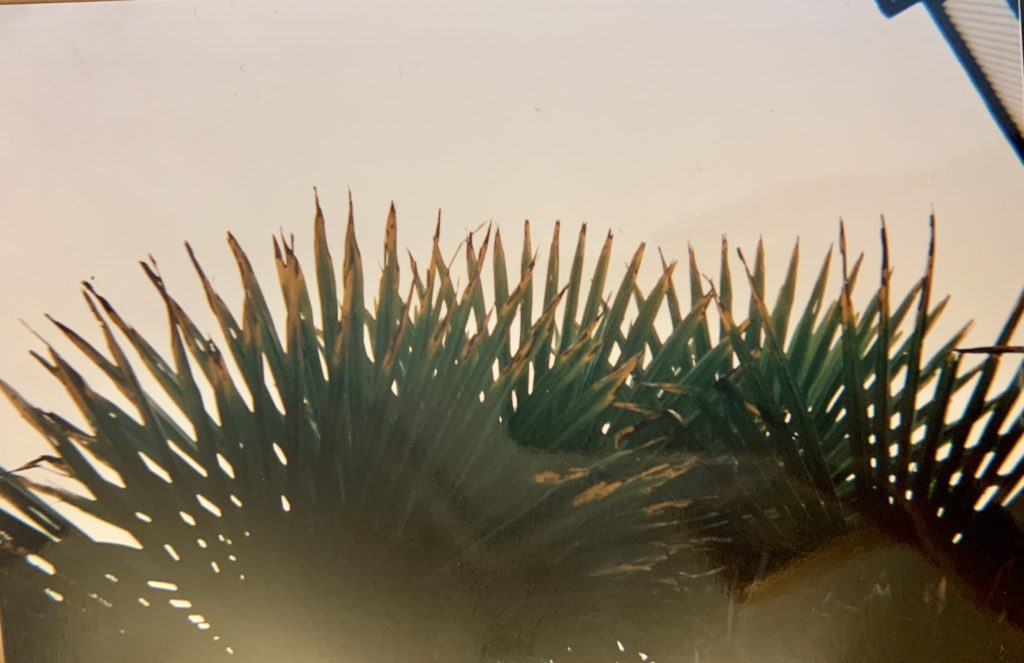
RINKO KAWAUCHI
https://www.bbc.co.uk/iplayer/episode/b08v8gxj/the-art-of-japanese-life-series-1-1-nature
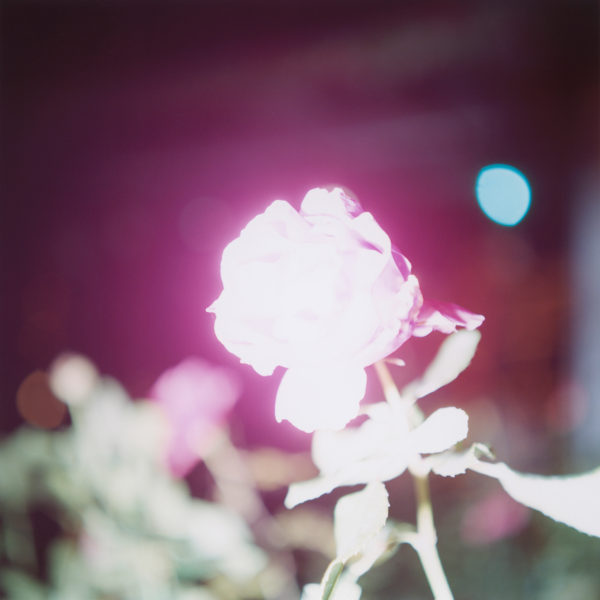
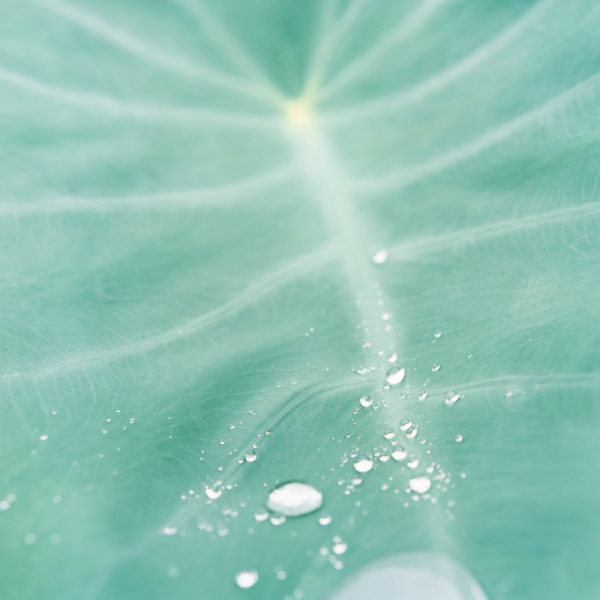
Rinko Kawauchi Hon FRPS 川内 倫子 is a Japanese photographer. Her work is characterized by a serene, poetic style, depicting the ordinary moments in life. Kawauchi became interested in photography while studying graphic design and photography at Seian University of Art and Design where she graduated in 1993. She first worked in commercial photography and advertising for several years before embarking on a career as a fine art photographer. In 2001 three of her photo books were published: Hanako (a Japanese girl’s name), Utatane (“catnap”), and Hanabi (“fireworks”). In 2004 Kawauchi published Aila; in 2010, Murmuration, and in 2011 Illuminance. Her series Illuminance is inspired by the subtle aesthetic of wabi-sabi.
In traditional Japanese aesthetics, wabi-sabi (侘寂) is a world view centered on the acceptance of transience and imperfection. The aesthetic is sometimes described as one of beauty that is “imperfect, impermanent, and incomplete”. Characteristics of the wabi-sabi aesthetic include asymmetry, roughness, simplicity, economy, austerity, modesty, intimacy, and appreciation of the ingenuous integrity of natural objects and processes.
Kawauchi’s art is rooted in Shinto, the ethnic religion of the people of Japan. According to Shinto, all things on earth have a spirit, hence no subject is too small or mundane for Kawauchi’s work; she also photographs “small events glimpsed in passing,” conveying a sense of the ephemeral. Kawauchi sees her images as parts of series that allow the viewer to juxtapose images in the imagination, thereby making the photograph a work of art and allowing a whole to emerge at the end; she likes working in photo books because they allow the viewer to engage intimately with her images.
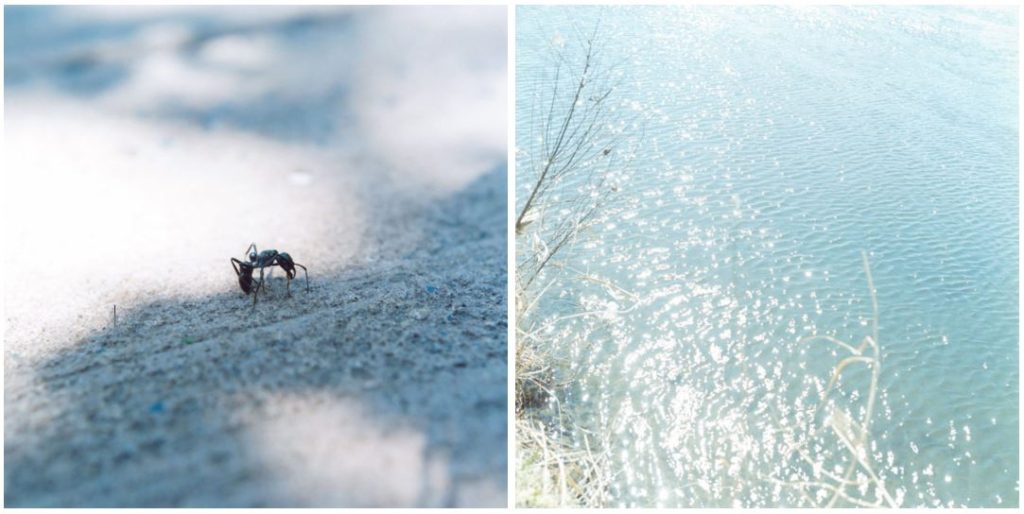
Analysis:
Kawauchi’s photographs give a sublime perspective of nature up close. She incorporates one of the most important photographic elements of light into her work and uses it in her favour to create the most striking images. She studies basic subjects that people see as boring or nothing special i.e. ants, water, flowers, leaves, and turns them into extraordinary focal points. Her photographs have an almost spiritual feel to them as they present nature in a majestic and serene way, differing from many other nature photographers who photograph in monochrome and capture the landscape as a whole rather than zooming in on the finer elements.

“PEOPLE OFTEN SAY THAT I HAVE A CHILD’S EYE. FOR EXAMPLE, I STARE AT ANTS GATHERING AROUND SUGAR, OR WHEN I SEEK SHELTER FROM THE RAIN, I GAZE UPON SNAILS. THESE ARE THINGS WHICH YOU OFTEN DO WHEN YOU ARE A CHILD AREN’T THEY? I HAVE A VERY SIMILAR SENSIBILITY TO THAT.”

“IT’S NOT ENOUGH THAT THE PHOTOGRAPH IS BEAUTIFUL. IF IT DOESN’T MOVE MY HEART, IT WON’T MOVE ANYONE ELSE’S HEART.”
